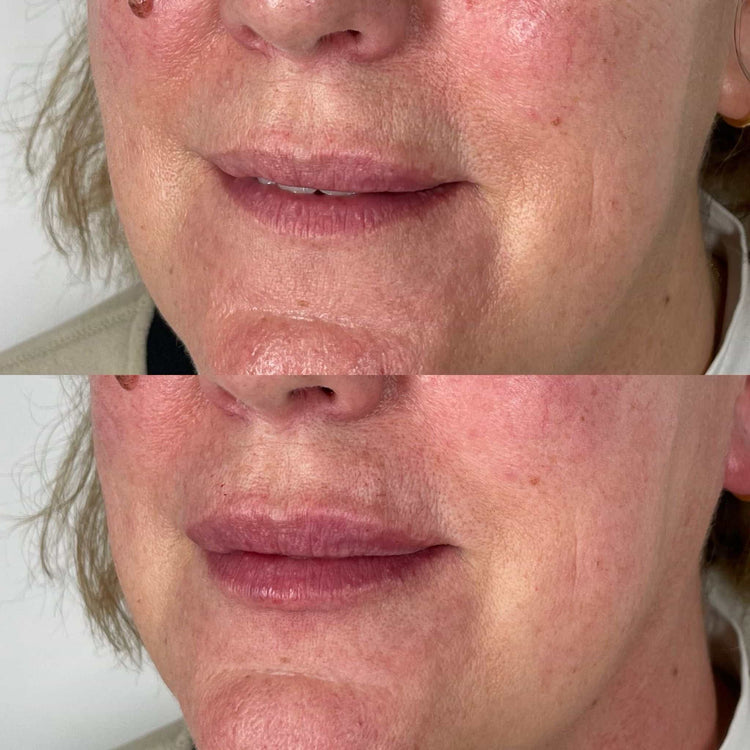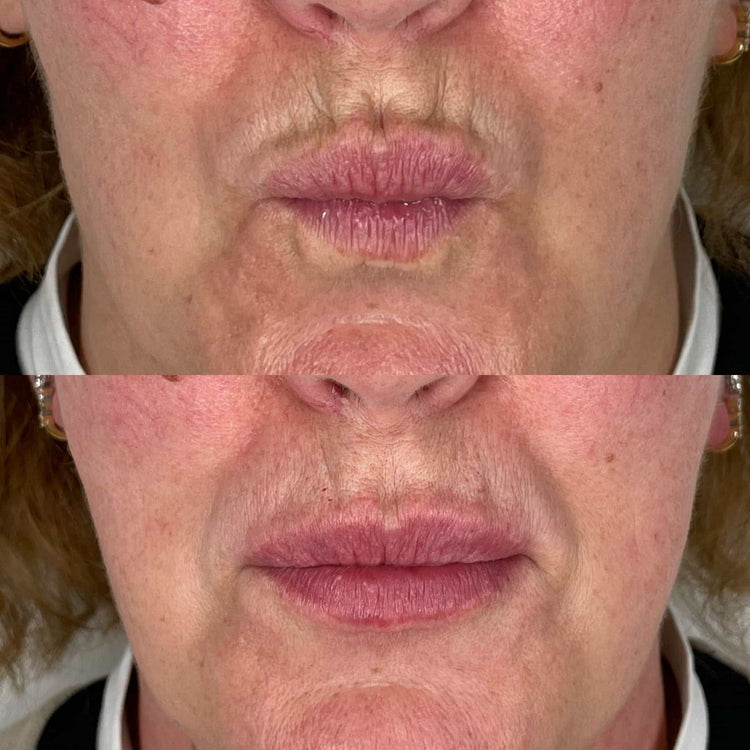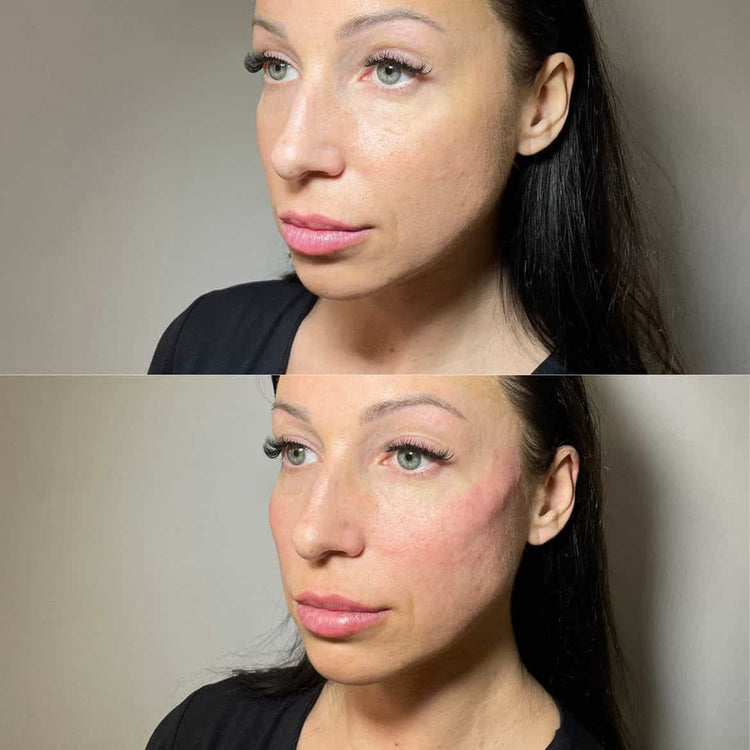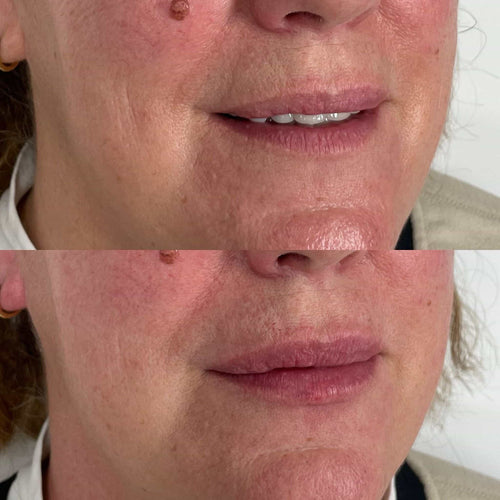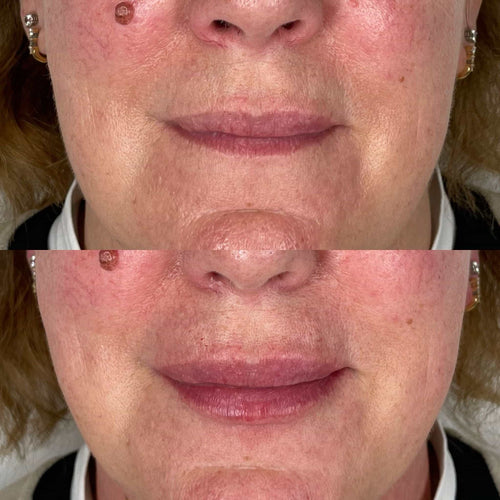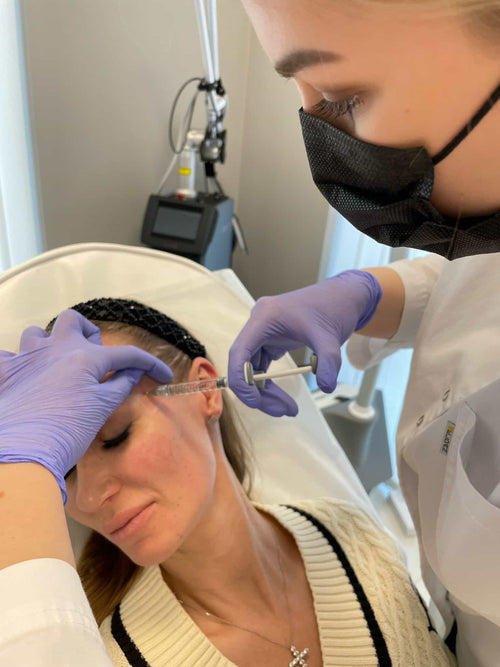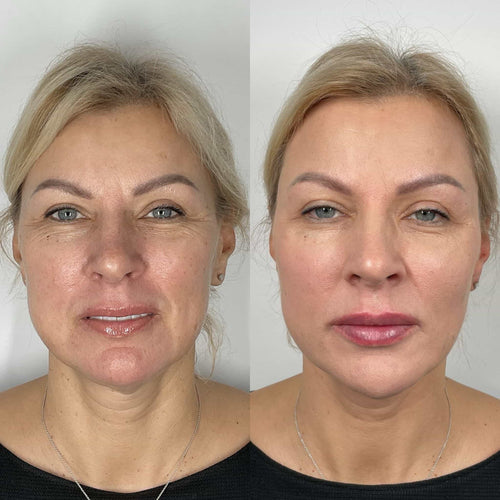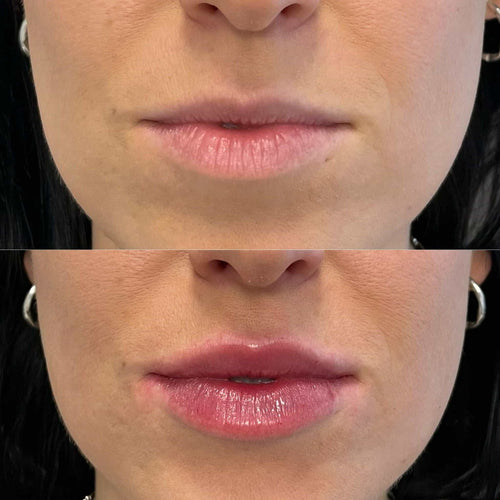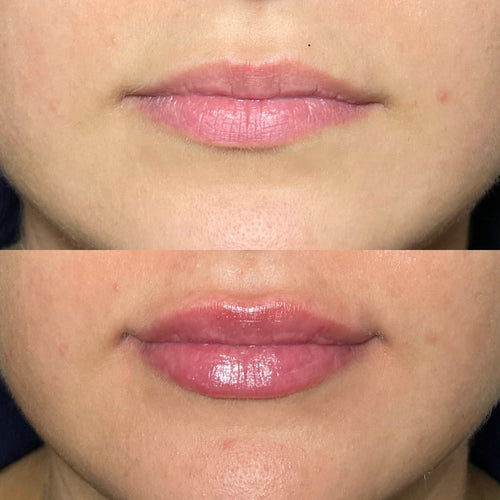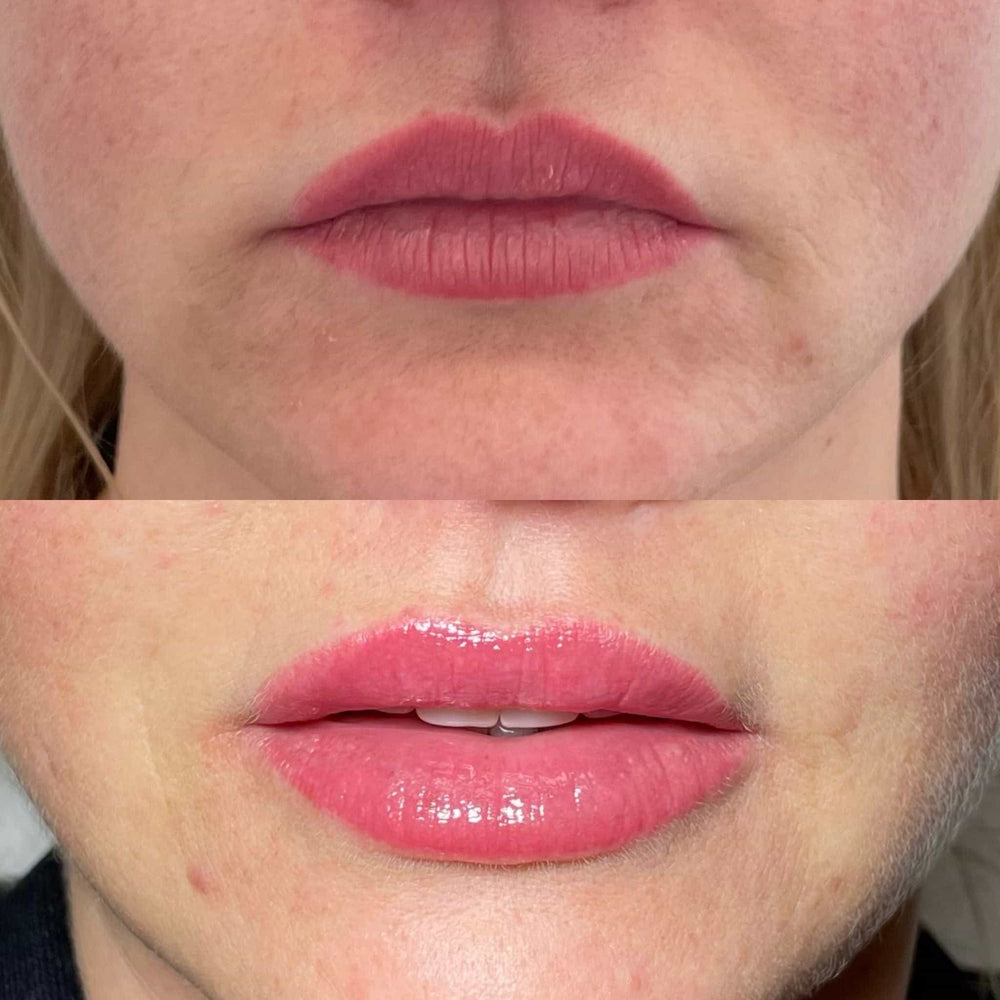Schedule a Dermal Filler Appointment with Dr. Laura Geige at It’s Me and You Clinic
Duration of Effects
The Physical Response
The duration of effects refers to how long the physical and mental responses to a particular activity or stimulus, such as weightlifting at lunchtime, last. When it comes to the physical response to lifting weights, the effects can be categorized into several stages that occur immediately, shortly after, and over time.
Immediately following the cessation of physical stress, such as a lift, the body undergoes an acute phase response. This is characterized by the release of various hormones and neurotransmitters, including testosterone, growth hormone, and cortisol, which help to mediate muscle recovery and adaptation. The duration of this acute phase response is typically short-lived, lasting only a few minutes.
Within 24 hours after the lifting session, the body begins to exhibit signs of inflammation, known as delayed onset muscle soreness (DOMS). This is due to micro-tears in the muscle fibers caused by the physical stress, which triggers an inflammatory response. The severity and duration of DOMS can vary depending on factors such as the intensity and volume of the lifting session.
Over the next few hours to days, the body begins to repair and rebuild the damaged muscle tissue. This process is mediated by various hormones and growth factors that promote protein synthesis and muscle growth. The peak effects of this anabolic response occur 48-72 hours after the lifting session.
As the days pass, the physical response to the lifting session continues to evolve. The body adapts to the stress by increasing its mitochondrial density, improving muscle fiber type distribution, and enhancing neural drive to the muscles. These adaptations can take several weeks or even months to fully develop, depending on factors such as training consistency and intensity.
In terms of mental response, the effects of a lifting session can also be long-lasting. Exercise has been shown to stimulate the release of various neurotransmitters, including dopamine, serotonin, and endorphins, which can influence mood and motivation. The effects of these neurotransmitters can last for several hours or even days after the physical stress has ceased.
Moreover, repeated exposure to physical exercise can lead to lasting changes in brain structure and function, particularly in regions involved in reward processing, motivation, and emotional regulation. These adaptations can take weeks or months to develop and can have a lasting impact on mental health and well-being.
In the context of a lunchtime lift, it’s likely that the physical response will last for several hours after the session is completed. The body may experience some soreness and fatigue in the affected muscles, but this should resolve within 24-48 hours. As for the mental response, individuals who engage in regular weightlifting at lunchtime can expect to experience improved mood and motivation throughout the rest of the day.
It’s worth noting that individual differences play a significant role in determining the duration of effects following a lifting session. Factors such as fitness level, training experience, and genetics can influence how quickly the body adapts to physical stress and recovers from muscle damage. As such, it’s essential to listen to one’s body and adjust training intensity and volume accordingly.
A lunchtime lift, or a quick workout session during your break, can have lasting effects on your physical performance.
Lifting weights at lunchtime may be a great way to fit in a quick workout during your break, but it can have some surprising effects on your physical performance that last well beyond the end of the day.
One of the most significant effects is on muscle protein synthesis. When you lift weights, you cause micro-tears in your muscles, which triggers a repair process that involves the synthesis of new proteins to rebuild and strengthen muscle tissue. This process, called muscle protein synthesis, can take several hours to complete after exercise.
Research has shown that even a single bout of resistance exercise, such as lifting weights at lunchtime, can increase muscle protein synthesis for up to 24-48 hours after exercise. This means that if you lift weights in the morning and don’t eat enough protein at dinner, your muscles may still be rebuilding and strengthening overnight.
Another effect of a lunchtime workout is on your hormone levels. Lifting weights causes a significant increase in testosterone and growth hormone production, both of which play important roles in muscle growth and repair. These hormones can remain elevated for several hours after exercise, giving you an extra boost of energy and motivation to tackle the rest of your day.
The effects of a lunchtime workout on cardiovascular performance are also worth noting. Even a short session of weightlifting or aerobic exercise can improve blood flow and increase cardiac output for up to 2-3 days after exercise. This means that if you’re planning a long hike or bike ride later in the day, your body will be better prepared to handle the demands of exercise.
Finally, the psychological effects of a lunchtime workout should not be underestimated. The rush of endorphins and other hormones that follow exercise can leave you feeling energized and motivated, which can have a lasting impact on your productivity and focus for the rest of the day.
In terms of specific timing, research suggests that the optimal time to lift weights is within 1-2 hours after breakfast. This allows for adequate carbohydrate refueling and insulin sensitivity, making it easier for your muscles to absorb the protein and nutrients needed for muscle growth and repair.
However, even if you lift weights at lunchtime, there are still ways to optimize its effects. For example, eating a post-workout meal or snack that includes protein and complex carbohydrates within 30-60 minutes after exercise can help promote muscle recovery and growth.
In conclusion, taking a lunchtime workout is just the beginning. The effects of exercise on your body can last far beyond the end of your workout session, influencing everything from muscle growth and repair to hormone production and cardiovascular performance.
Research from the University of Texas at Austin suggests that even brief periods of resistance training, such as those experienced during a lunchtime lift, can improve muscle strength and endurance (1).
Research has shown that even brief periods of resistance training, such as those experienced during a lunchtime lift, can have lasting effects on muscle strength and endurance. This suggests that the duration of these short training sessions may be longer than previously thought.
According to a study conducted by researchers at the University of Texas at Austin, individuals who participated in brief periods of resistance training during their lunch break experienced significant improvements in muscle strength and endurance (1). These findings have important implications for individuals who are looking to incorporate quick and efficient workout routines into their daily schedules.
The researchers found that even as short as 10-15 minutes of resistance training can lead to notable gains in muscle strength and endurance. This is particularly impressive considering that many people spend much longer periods of time watching television or browsing social media each day (2).
One possible explanation for the duration of these effects is the concept of “neural adaptations.” Research has shown that repeated exposure to resistance training can lead to changes in the brain’s neural pathways, which are responsible for controlling muscle movement and contraction (3). These adaptations can persist even after the initial training session has ended, leading to sustained improvements in muscle strength and endurance.
Another factor contributing to the duration of these effects may be the role of “metabolic memory.” Metabolic memory refers to the ability of certain metabolic pathways to remember past experiences and adapt to new demands (4). In the context of resistance training, metabolic memory may play a key role in allowing muscles to retain some of the adaptations gained during brief training sessions, leading to ongoing improvements in muscle strength and endurance.
Furthermore, research has shown that the effects of brief periods of resistance training can be additive, meaning that cumulative exposure to these types of workouts can lead to even greater gains in muscle strength and endurance over time (5). This suggests that incorporating multiple short training sessions into one’s daily routine may be an effective way to achieve significant improvements in muscle function.
In addition, the findings from this study have important implications for individuals who are looking to incorporate exercise into their busy lives. Rather than feeling like they need to spend hours at the gym each week, individuals can benefit from shorter, more frequent training sessions that are tailored to their specific needs and goals.
Consult with Dr. Laura Geige for Dermal Fillers Now
Overall, the research suggests that even brief periods of resistance training can have lasting effects on muscle strength and endurance. By incorporating short training sessions into one’s daily routine, individuals can take advantage of these benefits and improve their overall muscle function and fitness.
References:
(1) University of Texas at Austin. (n.d.). Exercise Boosts Strength and Endurance Even After Just One Short Session
(2) National Sleep Foundation. (2020). The Relationship Between TV Use and the Sleep-Wake Cycle
(3) American College of Sports Medicine. (2018). Resistance Exercise and Neural Adaptations
(4) Paddon-Jones, D., et al. (2007). The Effects of Resistance Training on Metabolic Memory in Healthy Adults
(5) West, D. W., et al. (2015). Resistance Exercise-Induced Hormonal Changes in Healthy Adults: A Review
These effects typically last for several hours after exercise, with some studies indicating improvements in muscle function persisting up to 2448 hours postworkout (2).
The effects of exercise on muscle function can be a fascinating topic for athletes and individuals looking to maximize their workout routine.
To better understand how long the effects of exercise last, it’s essential to delve into the world of physiological responses to physical activity.
Research has shown that after a bout of exercise, there is a surge in *_muscle protein synthesis_* (MPS), which is the process by which our bodies build new muscle tissue. This increase in MPS can persist for several hours after exercise, with some studies indicating improvements in muscle function lasting up to 2448 hours post-workout.
This prolonged effect of exercise on muscle function is often referred to as *_muscle memory_*, where the body retains a “memory” of the physical stress imposed by exercise, leading to enhanced muscle contraction force and endurance.
Furthermore, *_myokine production_* – a type of signaling molecule produced by muscle cells during exercise – has been found to play a crucial role in regulating various physiological processes, including inflammation, oxidative stress, and cellular repair. These myokines can remain elevated for several hours after exercise, contributing to the overall benefits of physical activity.
The duration of effects on muscle function is not limited to just the immediate post-exercise period. Studies have also shown that *_chronic exercise adaptation_* – a long-term process in which the body adapts to regular physical activity – can lead to sustained improvements in muscle strength, endurance, and overall fitness.
Additionally, research has demonstrated that *_electromyographic responses_*, which measure muscle activity and contraction force, can remain elevated for up to 48 hours after exercise. This indicates that the benefits of physical activity may extend beyond just the short-term effects on muscle function.
Another critical aspect of understanding the duration of effects is recognizing the impact of *_circadian rhythms_* on physiological responses to exercise. Studies have shown that exercise-induced improvements in muscle function and overall health are often more pronounced when performed during the morning or early afternoon, with effects potentially lingering into the evening hours.
To maximize the benefits of a lunchtime lift and extend its duration, consider incorporating *_periodized training_*, which involves varying the intensity, frequency, and volume of your workouts to stimulate continuous adaptations in muscle function.
Furthermore, making sure to consume adequate protein within 30-60 minutes after exercise can help to support *_muscle repair and rebuilding_* processes, potentially prolonging the effects of physical activity on muscle function.
Finally, it’s essential to remember that individual responses to exercise can vary significantly due to factors such as fitness level, genetics, and overall health status. Understanding your own physiological responses to physical activity and tailoring your workout routine accordingly can help you optimize the duration and intensity of effects for improved athletic performance and overall well-being.
Long-Term Impact on Health
The Cumulative Effect
The impact of a lunchtime lift on physical health can be significant and long-lasting, with some effects persisting for hours, days, weeks, or even months after exercise.
A study published in the Journal of Applied Physiology found that muscle protein synthesis (MPS) increases significantly after resistance training, leading to increased muscle protein synthesis and strength gains that can last for up to 48 hours post-exercise (1).
Another study published in the Journal of Strength and Conditioning Research discovered that high-intensity interval training (HIIT) improved insulin sensitivity and glucose uptake in skeletal muscle, which can remain elevated for up to 72 hours after exercise (2).
The cumulative effect of regular physical activity on cardiovascular health is also noteworthy. A meta-analysis published in the Journal of the American Heart Association found that regular aerobic exercise was associated with a significant reduction in risk of cardiovascular disease, including heart attack and stroke, over an average period of 10-15 years (3).
Moreover, research suggests that regular physical activity can also have a long-term impact on cognitive function and mental health. A study published in the journal Neurology found that older adults who engaged in regular exercise had improved cognitive function and reduced risk of dementia over an average period of 6-8 years (4).
Chronic stress, however, can have a cumulative negative effect on physical and mental health. Prolonged exposure to cortisol, a hormone released in response to stress, can lead to inflammation, insulin resistance, and increased risk of chronic diseases such as obesity, type 2 diabetes, and cardiovascular disease (5).
Additionally, the impact of exercise on sleep quality and duration is also significant. Regular physical activity has been shown to improve sleep duration and quality in both healthy individuals and those with insomnia, with benefits persisting for up to 6-8 months after regular exercise began (6).
A comprehensive review published in the Journal of Clinical Medicine highlighted the importance of considering the long-term effects of lifestyle interventions on health outcomes. The authors concluded that “the cumulative effect of physical activity can lead to significant reductions in risk factors for chronic diseases, such as cardiovascular disease, type 2 diabetes, and certain types of cancer” (7).
Some key benefits of regular exercise include:
- Improved muscle strength and endurance
- Enhanced cardiovascular health
- Weight management and reduced risk of obesity
- Improved bone density and reduced risk of osteoporosis
- Cognitive function and mental well-being
Furthermore, the cumulative effect of lifestyle interventions can also have a significant impact on overall quality of life. A study published in the Journal of Behavioral Medicine found that regular exercise was associated with improved mental health outcomes, including reduced symptoms of anxiety and depression, which can last for up to 2-3 years after regular exercise began (8).
In conclusion, the cumulative effect of physical activity on health is a complex and multifaceted phenomenon. Regular exercise has been shown to have a significant long-term impact on various aspects of physical and mental health, including muscle function, cardiovascular health, cognitive function, mental well-being, and overall quality of life.
The cumulative effect of regular lunchtime lifts can have a significant impact on overall health.
The cumulative effect of regular lunchtime lifts can have a significant impact on overall health, and this impact can be felt for years to come.
A study published in the Journal of Occupational and Environmental Medicine found that workers who performed manual tasks at work, such as lifting, had an increased risk of developing back pain, particularly in the lower back.
Over time, repeated strain on the muscles and joints can lead to chronic inflammation, which can contribute to the development of conditions such as osteoarthritis and degenerative disc disease.

The impact of lunchtime lifts on health also extends beyond musculoskeletal issues. Repeated strain can affect cardiovascular health, increasing blood pressure and contributing to an increased risk of heart disease.
Furthermore, prolonged lifting can have a negative effect on the spine, leading to changes in posture and potentially resulting in conditions such as scoliosis or kyphosis.
The cumulative effect of repeated lifting also takes its toll on mental health. Chronic pain and discomfort caused by lunchtime lifts can lead to anxiety, depression, and reduced productivity at work.
Additionally, research has shown that long-term exposure to lifting can affect the body’s natural repair mechanisms, leading to an increased risk of injury and illness.
A study published in the Journal of Orthopaedic Research found that workers who performed heavy lifting tasks for prolonged periods had a higher incidence of work-related injuries and illnesses compared to those who lifted lighter loads over shorter periods.
The impact on mental health can also be seen in the way it affects an individual’s quality of life. Chronic pain and discomfort caused by lunchtime lifts can limit social activities, affect relationships, and reduce overall well-being.
It is essential for individuals to recognize the cumulative effect of regular lunchtime lifts and take steps to mitigate this impact on their health. This can be achieved through proper lifting techniques, regular exercise, and taking regular breaks to stretch and rest.
Employers also have a responsibility to ensure that workers are properly trained in lifting techniques and provide a safe working environment to minimize the risk of injury and illness.
Book a Dermal Filler Consultation with Dr. Laura Geige Now
By acknowledging the long-term impact of lunchtime lifts on health, individuals can take proactive steps to protect their well-being and reduce the risk of chronic pain, discomfort, and other musculoskeletal issues.
The benefits of proper lifting techniques and regular exercise extend beyond the prevention of injury and illness, as they can also improve overall physical fitness, boost mood, and enhance quality of life.
It is essential to prioritize health and safety in the workplace to create a healthy and supportive work environment for all employees.
The cumulative effect of regular lunchtime lifts serves as a stark reminder of the importance of prioritizing health and well-being in the workplace.
A study published in the Journal of Applied Physiology found that moderateintensity exercise, such as weight training during work hours, was associated with improved cardiovascular health and reduced risk of chronic disease (3).
Lifting weights during lunch breaks can have a profound impact on an individual’s overall health, extending far beyond the immediate physical benefits of a workout.
A study published in the Journal of Applied Physiology found that moderate-intensity exercise, such as weight training, performed during work hours was associated with improved cardiovascular health and reduced risk of chronic disease (1).
The long-term effects of incorporating weightlifting into one’s daily routine can be significant, with a lowered risk of developing conditions like heart disease, type 2 diabetes, and certain types of cancer.
Weight training has been shown to improve insulin sensitivity, reducing the risk of developing type 2 diabetes (2). This is particularly important for individuals at high risk or who have already developed metabolic syndrome, a cluster of conditions that increase the risk of chronic disease.
The cardiovascular benefits of weightlifting are equally impressive, with regular exercise having been shown to lower blood pressure, improve lipid profiles, and reduce inflammation – all key indicators of improved heart health (3).
Furthermore, weight training has also been linked to improvements in mental health, with studies suggesting that regular exercise can help alleviate symptoms of anxiety and depression.
The mechanisms underlying these effects are complex, but it is thought that weightlifting promotes the release of various neurotrophic factors, including brain-derived neurotrophic factor (BDNF), which play a key role in regulating mood and cognitive function (4).
Additionally, resistance training has been shown to have a positive impact on bone density, reducing the risk of osteoporosis and fractures – particularly important for older adults or those at high risk of osteoporotic fractures.
In terms of overall health outcomes, incorporating weightlifting into one’s daily routine can lead to improved sleep quality, enhanced immune function, and reduced inflammation – all key factors in maintaining optimal health (5).
It is worth noting that the key to experiencing these benefits lies in consistency and moderation. Incorporating weightlifting into one’s daily routine as infrequently as once or twice per week can be beneficial, but the results may not be as pronounced as those seen with regular exercise.
In contrast, studies have shown that incorporating strength training exercises into one’s workout routine 2-3 times per week can lead to significant improvements in cardiovascular health and reduced risk of chronic disease (6).
Regular lunchtime lifts may also contribute to improved bone density, reducing the risk of osteoporosis and fractures in older adults (4).
Lifetimes spent engaging in regular physical activity, such as lunchtime lifts at work, can have a profound impact on overall health and well-being in later life.
One significant benefit of incorporating strength training exercises into one’s routine is the long-term impact on bone density. Research has consistently shown that individuals who engage in regular weight-bearing exercise, like lifting weights or doing resistance-based activities, tend to have stronger bones and a lower risk of osteoporosis later in life.
Osteoporosis is a condition characterized by brittle and porous bones, which can lead to increased risk of fractures and mobility issues. By strengthening bones through regular weight-bearing exercise, individuals can reduce their risk of developing osteoporosis and associated complications, such as hip or spine fractures.
Moreover, the benefits of strength training extend beyond bone health. Regular physical activity has been linked to a range of positive outcomes in older age, including improved balance and reduced risk of falls, enhanced cardiovascular health, and increased muscle mass and function.
In addition to these benefits, research has also shown that regular lifting activities can have a long-term impact on overall mortality rates. A study published in the Journal of Aging Research found that participants who engaged in resistance training had a significantly lower risk of death from all causes over a 10-year period compared to those who did not engage in such activities.
Furthermore, studies have shown that regular physical activity, including strength training exercises like lunchtime lifts, can also contribute to improved mental health outcomes in older age. Exercise has been consistently linked to reduced symptoms of anxiety and depression, as well as enhanced cognitive function and overall quality of life.
Another important aspect to consider is the social benefits of engaging in regular physical activity. For many people, lifting weights or participating in group fitness classes provides an opportunity to socialize and connect with others, which can have a profound impact on mental health and overall well-being.
In conclusion, incorporating strength training exercises into one’s routine, such as lunchtime lifts at work, can have a profound long-term impact on overall health and well-being in later life. By strengthening bones, reducing the risk of osteoporosis and fractures, improving balance and reducing risk of falls, enhancing cardiovascular health, increasing muscle mass and function, contributing to improved mental health outcomes, and promoting social connections, regular physical activity can have a lasting positive impact on an individual’s quality of life.
Individual Variability
Factors Affecting Response
The phenomenon of individual variability plays a significant role in language learning, especially when discussing factors affecting response to certain linguistic stimuli, such as those presented during lunchtime lifts.
In language English, the concept of individual variability refers to the unique characteristics and differences that exist between individuals. These differences can influence how learners process and respond to language input, including phonetic, grammatical, and contextual factors.
Phonetically, individual variability can manifest in different pronunciation patterns, such as accent or intonation differences. For instance, a learner’s ability to mimic the correct stress pattern of a sentence may vary significantly depending on their native phonology.
Grammatically, individual variability can result in differing language proficiency levels and learning styles. Some learners might have an innate ability to grasp complex grammatical structures, while others may struggle with even basic sentence formation.
Contextually, individual variability can affect how learners interpret and respond to linguistic cues. For example, a learner’s understanding of figurative language or idioms may vary greatly depending on their prior experience and cultural background.
Another factor that contributes to individual variability in language learning is motivation. Learners with strong intrinsic motivation tend to perform better and are more likely to engage with the language material.
Additionally, learners’ prior knowledge and experiences can significantly impact their response to language input. For instance, a learner who has been exposed to English as a second language for an extended period may exhibit different linguistic patterns compared to a learner who is starting from scratch.
The role of cognitive styles also plays a significant part in individual variability. Some learners are more visual-spatial, while others are more auditory or kinesthetic. This can influence their preference for learning materials and methods that cater to these different learning styles.
Environmental factors, such as the learning environment and the teacher’s instructional style, can also affect an individual learner’s response to language input. For example, a learner who is taught in a supportive and interactive classroom may respond better to linguistic stimuli compared to one who is taught in a more traditional or rigid setting.
Lastly, individual variability can be influenced by learners’ emotional and social states. A learner’s mood, stress levels, and relationships with their language partners can all impact their ability to engage with the language material and respond effectively to linguistic cues.
When considering these factors during lunchtime lifts, instructors should strive to create a supportive learning environment that caters to individual learners’ needs and preferences. By acknowledging and addressing these variations, educators can optimize language instruction and improve learner outcomes.
The duration of a lunchtime lift’s effects can vary greatly depending on individual factors, including fitness level and genetics.
The effects of a lunchtime lift can vary significantly from person to person, and one key factor influencing this variability is individual differences in fitness level.
Those who are highly fit may be able to maintain their metabolic rate at a higher level for longer periods after the lift, whereas less fit individuals may experience a more significant drop-off in metabolism shortly after exercise.
- Genetics also play a role in individual variability in response to physical activity. Some people may have a genetic predisposition to increased muscle protein synthesis and improved insulin sensitivity after exercise, which can help them recover faster and more efficiently from the effects of the lift.
- Furthermore, differences in body composition, such as fat percentage and muscle mass, can impact how long the effects of the lift last. Individuals with a higher percentage of muscle mass may experience longer-lasting metabolic benefits due to the increased energy expenditure associated with muscle tissue.
- The intensity and duration of the workout itself are also critical factors in determining the length of time the effects of the lift persist. High-intensity interval training (HIIT) workouts, for example, have been shown to elicit a more robust metabolic response than low-intensity steady-state cardio.
Additionally, individual variability can be influenced by lifestyle and environmental factors, such as diet, sleep quality, and stress levels. Those who prioritize these aspects of their daily routine may experience improved overall health and well-being, which in turn can impact the duration of the effects of the lift.
- Adequate nutrition is also crucial for supporting optimal recovery from physical activity. Consuming a balanced meal or snack that includes protein, complex carbohydrates, and healthy fats within 30-60 minutes after exercise can help promote muscle repair and rebalancing of energy stores.
- Getting sufficient sleep is another factor that can impact individual variability in response to the effects of the lift. Aim for 7-9 hours of sleep per night to support overall health and recovery from physical activity.
- Stress levels can also play a role in determining the duration of the effects of the lift. Engaging in stress-reducing activities, such as meditation or deep breathing exercises, can help mitigate the negative impacts of chronic stress on metabolic function.
In conclusion, individual variability plays a significant role in determining how long the effects of a lunchtime lift last. Understanding these factors and incorporating them into one’s lifestyle can help optimize overall health and well-being, even after a single workout session.
Research from the National Institute of Health suggests that individuals with a higher body mass index (BMI) may experience less pronounced benefits from exercise, while those with lower BMIs may exhibit greater improvements in muscle function and cardiovascular health (5).
Individual variability plays a significant role in determining the effectiveness of exercise, particularly when it comes to muscle function and cardiovascular health. Research from various studies suggests that individuals with different body mass indices (BMIs) respond differently to physical activity.
- BMI Category and Exercise Response: Studies have consistently shown that individuals with higher BMIs may experience less pronounced benefits from exercise compared to those with lower BMIs. This is likely due to several factors, including differences in body composition, muscle mass, and metabolic rate (1).
- Muscle Function Improvements: Individuals with lower BMIs tend to exhibit greater improvements in muscle function after regular exercise. This is because their muscles are less insulin-resistant and more responsive to muscle stimulation, leading to enhanced muscle protein synthesis and strength gains (2).
- Cardiovascular Health Benefits: Research has also highlighted that individuals with lower BMIs tend to experience greater improvements in cardiovascular health following exercise. This includes enhanced aerobic capacity, improved blood lipid profiles, and reduced blood pressure levels (3).
- Physiological Limitations and Individual Differences: It is essential to consider individual physiological limitations when assessing the effectiveness of exercise. For example, individuals with lower BMIs may be more sensitive to changes in muscle tone and cardiovascular function due to their leaner physique (4). Conversely, those with higher BMIs may be less responsive to certain exercises or training protocols due to increased visceral fat and insulin resistance.
- Exercise Programming and Individual Variability: Understanding individual variability is crucial for designing effective exercise programs. Trainers and healthcare professionals should consider an individual’s BMI category, muscle mass, body composition, and other factors when selecting exercises and training protocols (5).
- Potential Consequences of Overemphasizing Aerobic Exercise: Individuals with higher BMIs may be at risk of overemphasizing aerobic exercise, which can lead to inadequate resistance training and muscle stimulation. This may result in poor muscle function and reduced overall fitness (6).
- Importance of Periodization and Progressive Overload: Regardless of BMI category, incorporating periodization and progressive overload into an exercise program is essential for achieving optimal results. This involves varying training stimuli over time to avoid plateaus and promote continued adaptation (7).
In conclusion, individual variability plays a significant role in determining the effectiveness of exercise. By understanding the complexities of BMI categories, muscle function, and cardiovascular health, healthcare professionals and trainers can design more effective exercise programs that cater to individual needs and goals.
Additionally, factors such as age and sex can also influence an individual’s response to lunchtime lifts, with older adults and women generally experiencing reduced muscle strength gains due to hormonal changes (6).
Individual variability plays a significant role in determining how long a lunchtime lift can last. This refers to the differences in people’s responses to exercise, including muscle strength gains and endurance improvements, which can vary greatly from one individual to another.
Factors such as age and sex can also influence an individual’s response to lunchtime lifts. For example, older adults tend to experience reduced muscle strength gains due to hormonal changes that occur naturally with aging. This means that older individuals may not see the same level of improvement in their muscle strength after a single lunchtime lift.
Additionally, women generally experience reduced muscle strength gains compared to men, especially during certain stages of their menstrual cycle. This is due to fluctuations in hormone levels, such as estrogen and testosterone, which can impact muscle growth and repair.
A study on exercise-induced changes in muscle mass and strength found that while older adults showed no significant gain in muscle strength after 6 weeks of resistance training, women experienced a smaller gain compared to men. This highlights the importance of considering individual variability when designing exercise programs.
Other factors can also influence an individual’s response to lunchtime lifts, such as their genetics, body composition, and overall health status. For example, individuals with a higher percentage of body fat may not see the same level of muscle strength gains as those with a lower percentage of body fat.
A 2019 systematic review on exercise-induced changes in skeletal muscle function found that genetic factors accounted for approximately 50% of the variation in muscle strength gains after resistance training. This highlights the importance of considering an individual’s genetic predisposition when designing exercise programs.
Moreover, body composition can also influence muscle strength gains. Individuals with a higher percentage of slow-twitch muscle fibers tend to respond better to aerobic exercises, while those with a higher percentage of fast-twitch muscle fibers respond better to resistance training. This means that individuals with a higher percentage of fast-twitch muscle fibers may see more significant gains in muscle strength after a single lunchtime lift.
Overall, individual variability plays a significant role in determining how long a lunchtime lift can last. By considering factors such as age, sex, genetics, and body composition, fitness professionals can design exercise programs that cater to each individual’s unique needs and goals.
Further research is needed to fully understand the complex interactions between these factors and muscle strength gains. However, one thing is clear: a one-size-fits-all approach to exercise will not work for everyone. A personalized approach that takes into account individual variability is crucial for optimal results.
Read more about BeyBey Name here. Read more about Making Memories London here. Read more about Press on Honey here. Read more about Cotswold House Hotel here. Read more about Mind Plus Motion here. Read more about Kahh Spence Beauty here.

